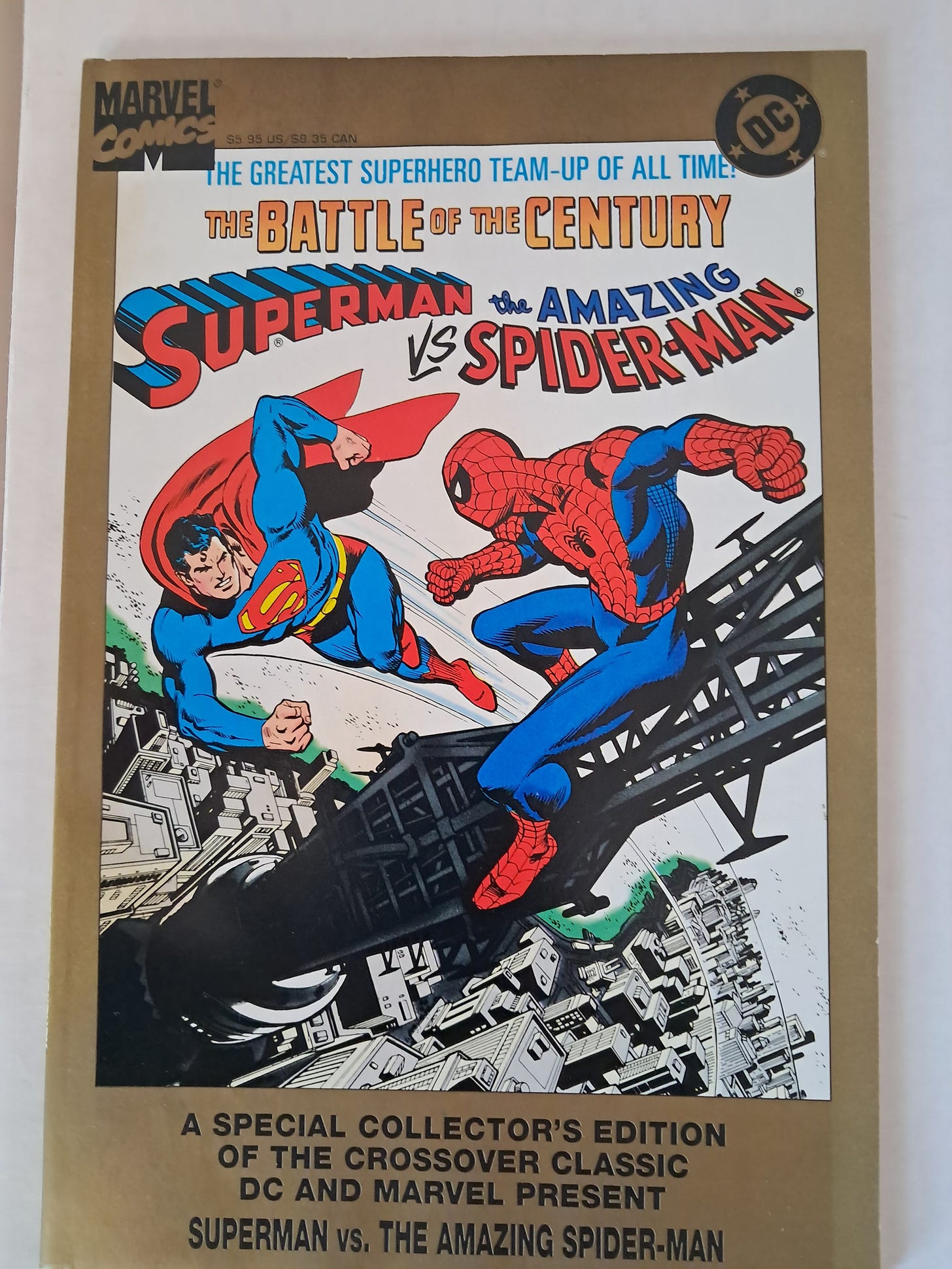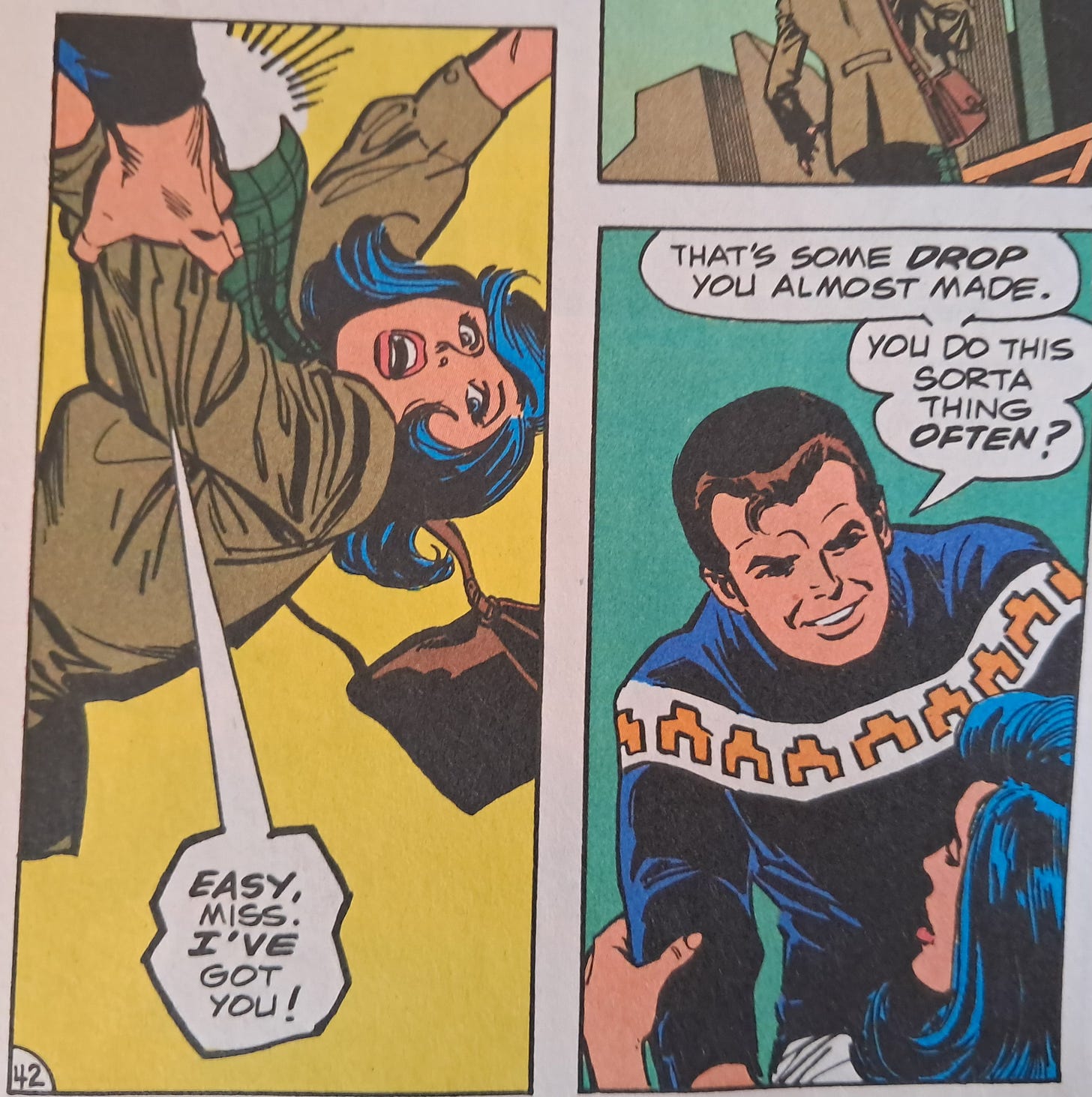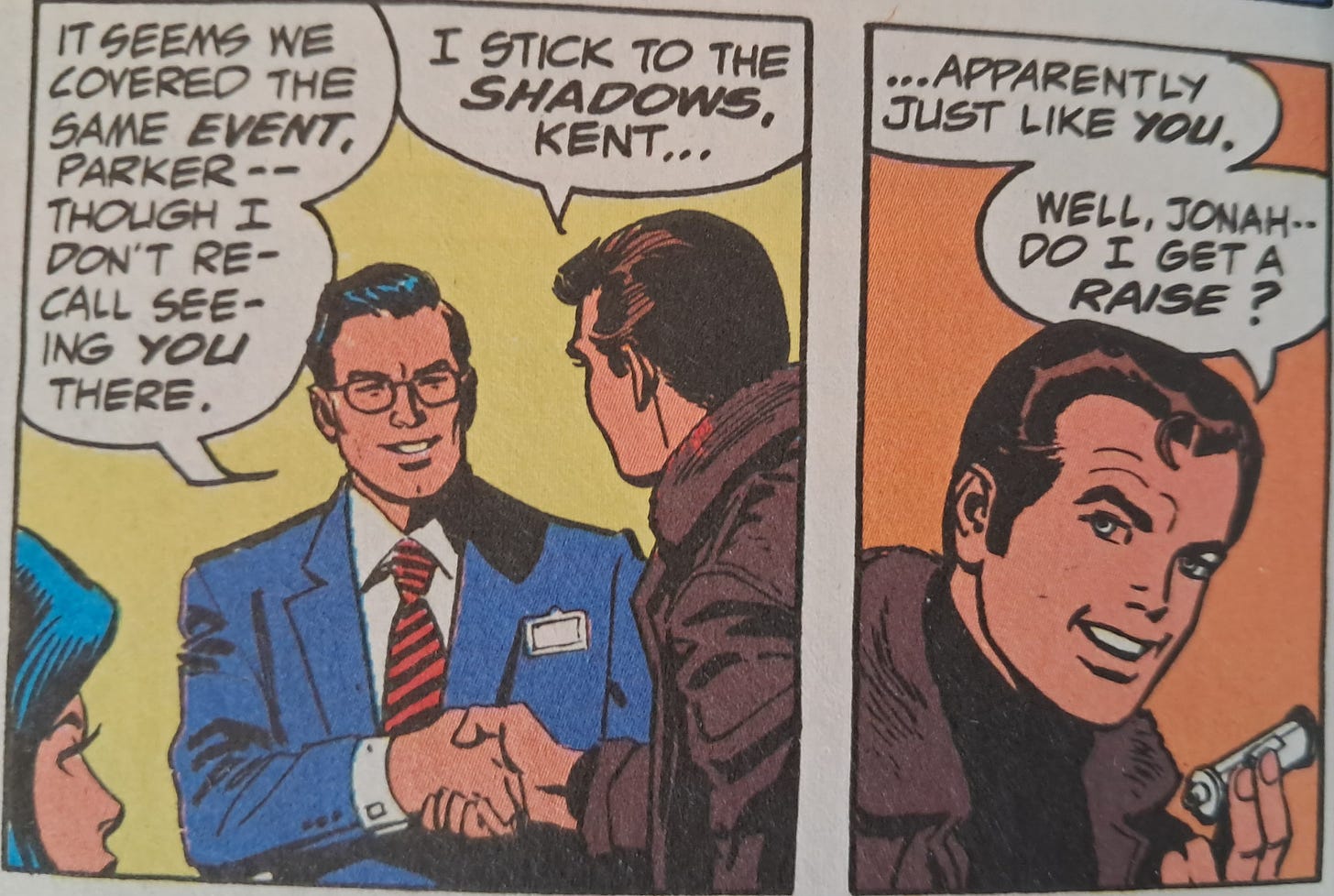Crossovers are like a vacation within a vacation, because even fictional universes are pausing their usual rules. These events can be lots of fun when done right, and the first time Marvel and DC crossed over with each other, they got it right because they prioritized the fun part.
Superman vs. The Amazing Spider-Man came out in 1976 in a single oversize issue with a whopping two-dollar cover price. Corporate symbols square off on the cover as though one isn’t immensely stronger than the other.
Readers were already used to seeing crossovers within DC and within Marvel. Superman and Batman had an entire series devoted to teaming them up (World’s Finest), and Spider-Man also had a series dedicated to pairing him up with various Marvel characters (Marvel Team-Up), but DC and Marvel characters sharing the same book? And even the same pages and panels? It must have felt like a once-in-a-lifetime event (it was not, especially when the ’90s rolled around, but it could have been).
Gerry Conway wrote the book, and Ross Andru drew it. But how on earth did they explain the highly unlikely meeting of superheroes from two different universes?
They didn’t. They just pretended that Superman and Spider-Man had always existed in the same world and simply never crossed paths before now. Does this mean that the Justice League and Avengers also existed in the same world and somehow had never joined forces to tackle any of the numerous threats that plagued the Earth? Or that no one ever thought to call in Superman to tame the Hulk? So it would appear.
This is a classic case of not letting perfect be the enemy of good. Yes, they could have spared a few pages to explain why these characters were suddenly able to interact. They could have ensured the comic fit neatly into the ongoing continuities of both DC and Marvel. But that would have taken a few pages away from the ostensibly once-in-a-lifetime event.
It’s like a holiday in which calories magically don’t count. Indulge in the sugar, and then resume your discipline tomorrow.
Conway’s script is a paint-by-numbers superhero team-up, and that was the right way to go here. This was not the time to get experimental, expound upon deep and meaningful themes, or aim for The Greatest Comic Ever. Superman vs. The Amazing Spider-Man just needed a solid, by-the-book superhero story that seized every opportunity to have fun along the way without getting too carried away.
It opens with two short, solo stories. We meet Superman and his supporting cast as he foils Lex Luthor’s latest scheme. Then we meet Spider-Man and his supporting cast as he foils Doctor Octopus’s latest scheme. The two villains meet in jail and agree to join forces. Clark Kent and Peter Parker (and their respective supporting casts) attend the World News Conference (the crossover is lucky that they work in the same industry).
Paths start intersecting, and when someone disguised as Superman kidnaps Lois Lane and Mary Jane, we get that staple of comic book crossovers: two superheroes duking it out over a misunderstanding. It was already a cliché by this point, but given that it’s the first inter-company crossover, this one gets a pass. Plus, they had to justify that “vs.” in the title, as well as the book’s subtitle: The Battle of the Century.
The century had better battles, but the novelty makes this one memorable. Spider-Man unwittingly cheats, thanks to Lex Luthor zapping him with red sun radiation. The boost in strength evens the odds, allowing the fight to span multiple pages rather than multiple seconds, but corporate politics ensured that this fight would never end with a decisive victor. (In the later Marvel vs. DC, the companies recused themselves and let the readers decide who would win.)
From here, it’s a standard superhero team-up. The power levels may not be even, but Supes and Spidey complement each other as they go about thwarting Lex and Doc Ock’s scheme. While Superman stops a tidal wave, Spider-Man manipulates the two villains into turning on each other. In an amusing moment, Spidey points out a bit of simple logic to Doctor Octopus: If Lex Luthor destroys Earth, then maybe that wouldn’t turn out so well for someone who lives on Earth.
The team-up concludes with the two superheroes having earned each other’s respect. Clark and Peter briefly meet, with the hint that perhaps they each suspect who the other is.
It’s nothing profound, and it never needed to be. The comic zeroes in on the essence of its two leads and depicts them in classic form. Conway was smart to avoid any trace of multiversal madness, which would only have replaced some of the fun romp with convoluted lore.
Superman and Spider-Man met a second time in 1981, in a comic titled simply Superman and Spider-Man. Jim Shooter wrote this one, and John Buscema and a full brigade of inkers provided the artwork.
Doctor Doom and the Parasite menace our heroes this time, and the scope of the crossover expands to include the Hulk and Wonder Woman in minor supporting roles. Clark Kent goes to work for the Daily Bugle while Peter Parker goes to work for the Daily Planet, which is an amusing gimmick that allows us to compare and contrast their worlds.
Like the first, the sequel has the right idea—we’re all here just to have a good time, nothing more. But it also reveals the fatal flaw of these inter-company crossovers.
Each time you do one, it becomes a little less special.









Out of all the heroes, interesting that they picked a more recent hero like Spider-Man to go up against DC's classic super! Though they do share a lot of similarities. The crossover sounds highly entertaining.
I wonder if the companies would be open to doing a simple crossover nowadays. Superman, Batman, and Captain America will all fall into public domain in the 2030s, and I can't tell if that will make Marvel and DC more open to the possibilities or if they'll ignore it in an attempt to reinforce their claim on each character.